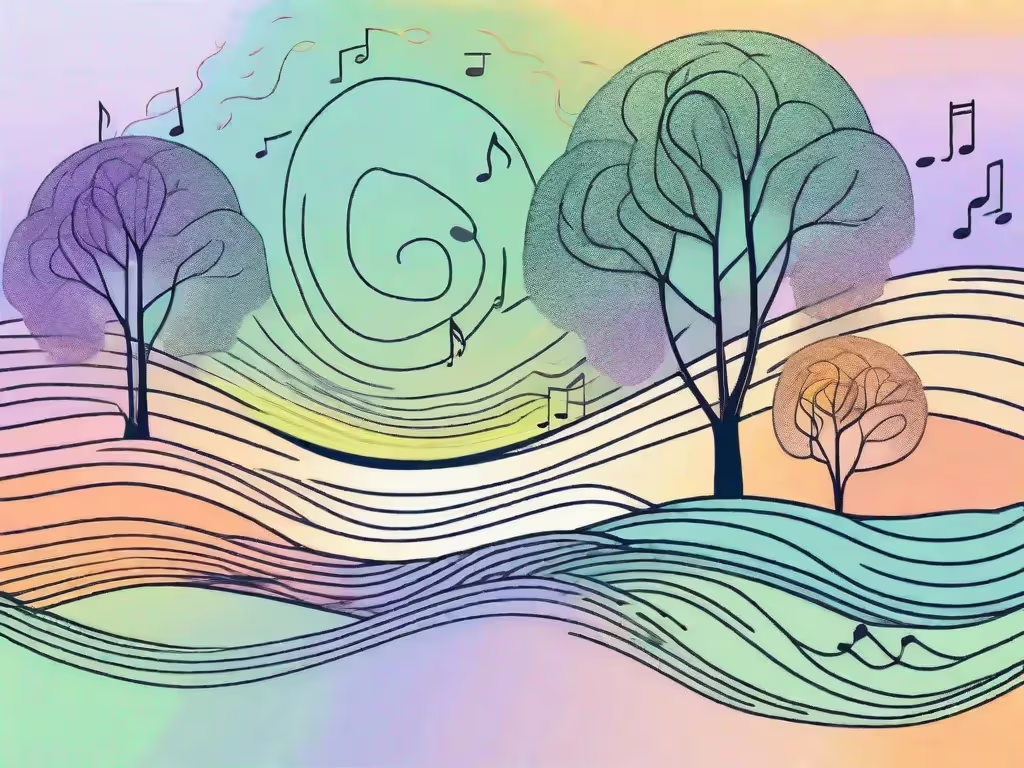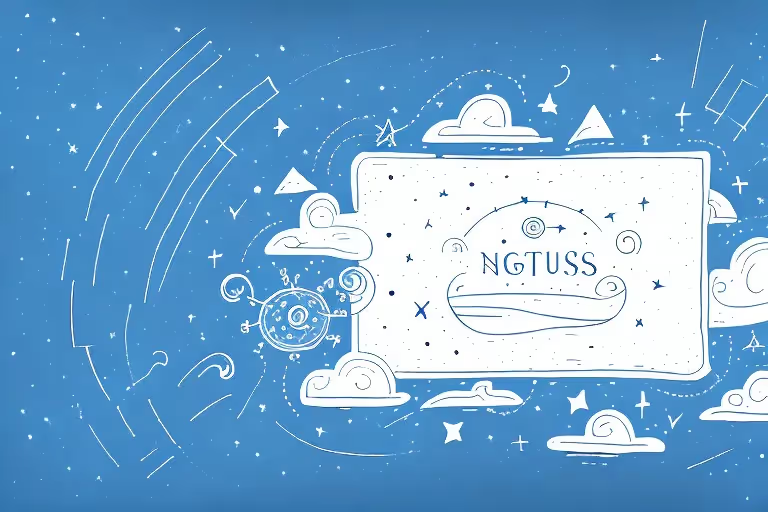In today's fast-paced and hectic world, finding moments of peace and tranquility can be a challenge. Many people turn to meditation as a way to quiet their minds and achieve a sense of inner calm. One form of meditation that has gained popularity in recent years is gap meditation. In this article, we will explore the concept of gap meditation and its connection to mindfulness and awareness.
The Concept of Gap Meditation
Gap meditation is a form of meditation that focuses on creating space between our thoughts and allowing ourselves to experience moments of stillness. The term "gap" refers to the moments of silence and stillness that we tap into during the practice. By cultivating this gap, we are able to observe our thoughts without getting caught up in them, leading to a greater sense of clarity and presence.
When we engage in gap meditation, we embark on a journey of self-discovery and inner exploration. It is a practice that encourages us to let go of the constant stream of thoughts that often dominate our minds, and instead, create a space where we can simply be. In this space, we can connect with our true essence, free from the distractions and attachments of the external world.
Origins and Philosophy of Gap Meditation
Gap meditation has its roots in various ancient meditation traditions, particularly in Zen Buddhism and Taoism. These traditions emphasize the importance of stillness and silence as a means to connect with our true nature. The concept of the gap can be traced back to the teachings of Zen masters who sought to guide their students towards a direct experience of reality beyond concepts and words.
In Zen Buddhism, the practice of zazen, or sitting meditation, is central to the cultivation of the gap. By sitting in stillness and observing the breath, practitioners learn to let go of the constant stream of thoughts and enter into a state of pure awareness. This state is often described as "no-mind," where the boundaries between the self and the external world dissolve, and a sense of interconnectedness arises.
Taoism, on the other hand, emphasizes the natural flow of life and the importance of aligning ourselves with the rhythm of the universe. In Taoist meditation, practitioners seek to harmonize their inner energy, or qi, with the energy of the cosmos. By entering into the gap, they can tap into the vast reservoir of universal energy and experience a deep sense of peace and tranquility.
The Role of Silence in Gap Meditation
Silence plays a crucial role in gap meditation. It is through silence that we are able to quiet our inner chatter and connect with the present moment. In the midst of our busy lives, filled with noise and distractions, silence offers us a sanctuary where we can find solace and inner peace.
When we create space for silence in our meditation practice, we give ourselves the opportunity to pause, reflect, and tune in to our inner selves. It is in these moments of silence that we can truly listen to the whispers of our intuition and gain insights that may have eluded us in the noise of everyday life.
There are various techniques that can help us cultivate silence during gap meditation. Focusing on the breath is a common practice, as it allows us to anchor our attention in the present moment and let go of the mental chatter. By bringing our awareness to the sensation of the breath entering and leaving our bodies, we can gradually quiet the mind and enter into a state of stillness.
Another technique is the repetition of a mantra, a sacred word or phrase that is repeated silently or aloud. The mantra serves as a focal point, helping to quiet the mind and create a space for silence to emerge. As we repeat the mantra, we can feel the vibrations resonating within us, bringing a sense of peace and tranquility.
Simply sitting in stillness can also be a powerful way to cultivate silence. By finding a comfortable position and allowing ourselves to be fully present in the moment, we can create a space where silence can naturally arise. In this space, we can let go of the need to think, analyze, or do, and simply be with ourselves.
As we continue to practice gap meditation and explore the depths of silence, we may discover that it is not just an absence of sound, but a profound presence that connects us to something greater than ourselves. It is in this silence that we can experience a sense of unity with all of existence, transcending the boundaries of time and space.
Understanding Mindfulness
Mindfulness is a term that has become increasingly popular in recent years, and for good reason. It refers to the practice of intentionally paying attention to the present moment without judgment. By cultivating mindfulness, we are able to fully experience our thoughts, emotions, and sensations as they arise, allowing us to respond to life's challenges with greater clarity and wisdom.
The Basics of Mindfulness
To practice mindfulness, one must first develop the ability to anchor their attention to the present moment. This can be done through various techniques such as focusing on the breath, body scan meditation, or mindful walking. The key is to bring a curious and non-judgmental awareness to whatever is happening in the present moment.
The Connection Between Mindfulness and Meditation
Mindfulness and meditation are interconnected practices that support each other. While meditation provides the formal training to cultivate mindfulness, mindfulness allows us to bring the qualities of presence and awareness into our everyday lives. By practicing mindfulness during our meditation sessions, we are better able to integrate these qualities into our daily experiences.
Awareness in Meditation
Awareness is an essential aspect of any meditation practice, including gap meditation. It involves being fully present and attentive to the sensations, thoughts, and emotions that arise in our consciousness. Cultivating awareness allows us to observe our inner world without getting entangled in it, leading to a greater sense of freedom and spaciousness.
The Importance of Awareness in Meditation
Awareness is often described as the "silent witness" that simply observes the contents of our consciousness. By developing this quality of awareness, we are able to gain insight into our habitual patterns of thinking and reacting. This insight empowers us to make conscious choices and break free from automatic and unhelpful behaviors.
Techniques to Enhance Awareness
There are various techniques that can help enhance our awareness during meditation. One such technique is body scan meditation, where we systematically bring our attention to different parts of our body, noticing any sensations or tensions that arise. Another technique is loving-kindness meditation, where we cultivate feelings of compassion and kindness towards ourselves and others. These practices serve to deepen our awareness and cultivate a sense of interconnectedness.
The Benefits of Gap Meditation
The practice of gap meditation offers a wide range of benefits that encompass both physical and mental well-being. By engaging in this practice, individuals can experience profound transformations in their lives.
Physical and Mental Health Benefits
Gap meditation has been shown to have numerous health benefits. Research has found that regular meditation practice can reduce stress, lower blood pressure, and enhance immune function. Additionally, it can improve focus, concentration, and overall cognitive performance. The practice also promotes emotional well-being by reducing anxiety, depression, and increasing feelings of calmness and happiness.
Impact on Stress and Anxiety
In today's fast-paced world, stress and anxiety are common ailments that many individuals face. Gap meditation provides an effective tool for managing these conditions. By creating a space between our thoughts and cultivating a sense of stillness, we are able to break free from the cycle of worry and experience a greater sense of peace and calmness.
Practicing Gap Meditation
Preparing for Gap Meditation
Before starting your gap meditation practice, it is important to create a conducive environment that supports your practice. Find a quiet and comfortable space where you can sit undisturbed for the duration of your meditation session. You may also want to dim the lights or light a candle to create a soothing ambiance.
Step-by-Step Guide to Gap Meditation
- Find a comfortable sitting position, either on the floor or on a chair. Close your eyes and take a few deep breaths to center yourself.
- Shift your attention to your breath, noticing the sensation of the breath entering and leaving your body. Allow your breath to be your anchor, bringing you back to the present moment whenever your mind wanders.
- As thoughts arise, simply observe them without judgment. Let them pass through your awareness like clouds floating across the sky.
- Whenever you notice that you have become lost in thought, gently bring your attention back to your breath and the present moment. Use this returning as an opportunity to enter into the gap between thoughts.
- Continue to anchor your attention to the breath and allow moments of stillness and silence to arise naturally. Embrace these gaps and rest in the spaciousness that they provide.
Remember, gap meditation is a practice, and like any skill, it requires patience and consistency. Start with short sessions and gradually increase the duration as you become more comfortable with the practice.
In conclusion, gap meditation offers a powerful pathway to cultivating mindfulness and awareness. By creating space between our thoughts and tapping into moments of stillness, we can experience a greater sense of clarity, peace, and well-being. Incorporating gap meditation into our daily lives can bring about profound transformations and help us navigate the challenges of modern life with grace and equanimity.On the Aura Health App, you can find guided gap meditation sessions that provide a structured approach to this practice. The app offers a variety of mindfulness and meditation exercises designed to support your well-being journey. Start today and discover the transformative power of gap meditation.
Aura is Your All In One App for Meditation, Mindfulness Wellbeing
Find peace every day with one app for your whole well-being. There is no one-size-fits-all solution to mental well-being. Aura is the first all-in-one wellness app that learns how to best help you. Discover an endless library of expert-created tracks for your well-being, all taught by the world’s best coaches, therapists, and storytellers. With Aura's personalized recommendations, you can find peace every morning, day and night.



.webp)






.avif)

%20(1).avif)


.avif)
.avif)
.webp)


.avif)


















































































































.avif)

















.svg)









